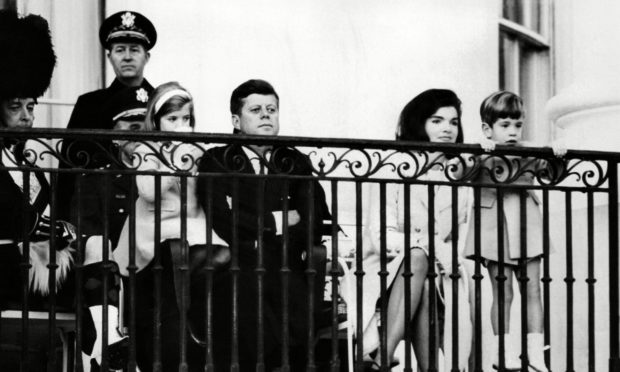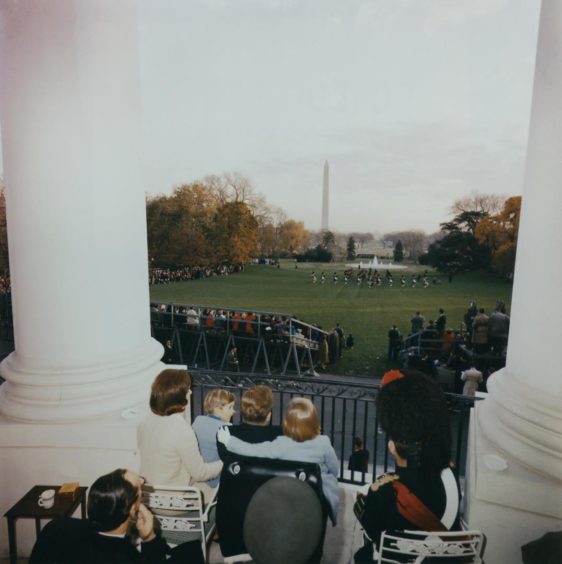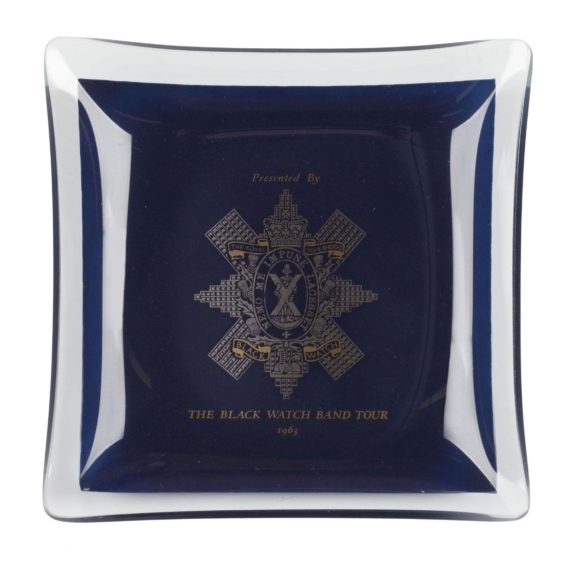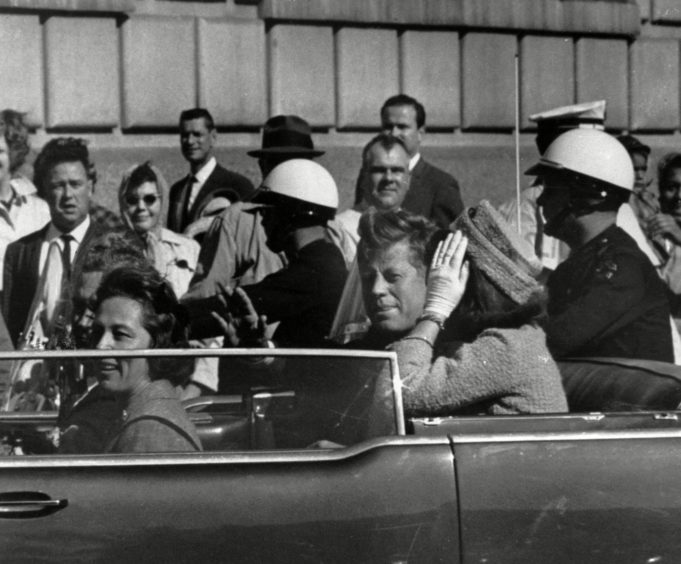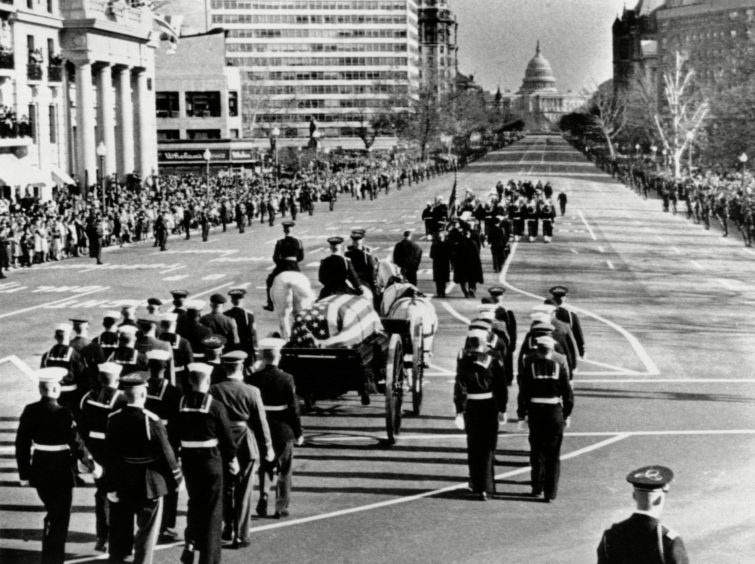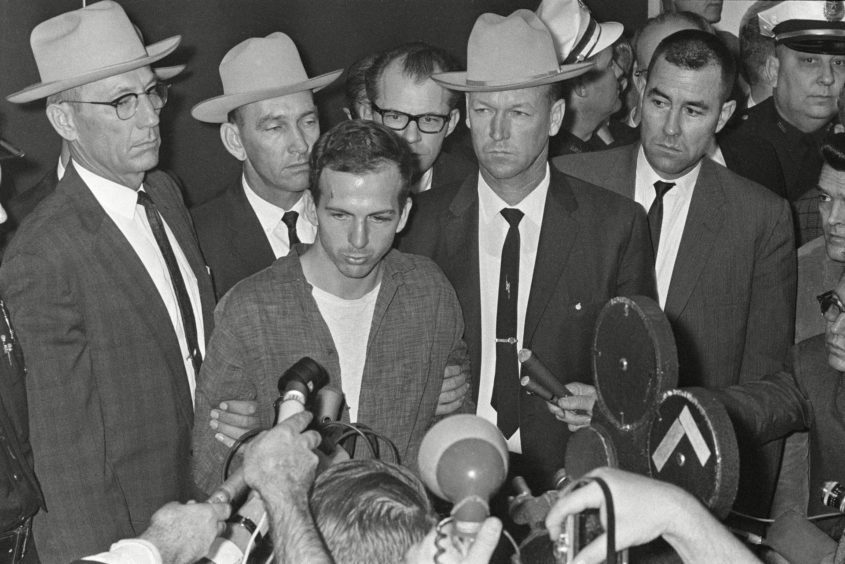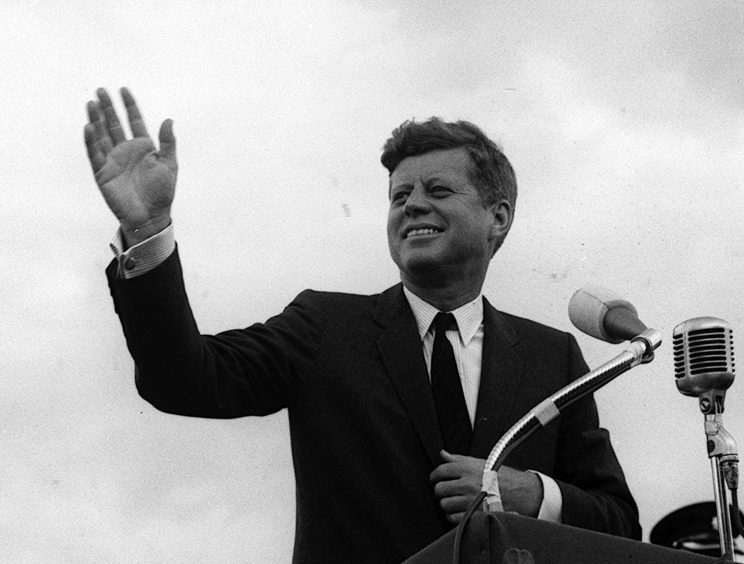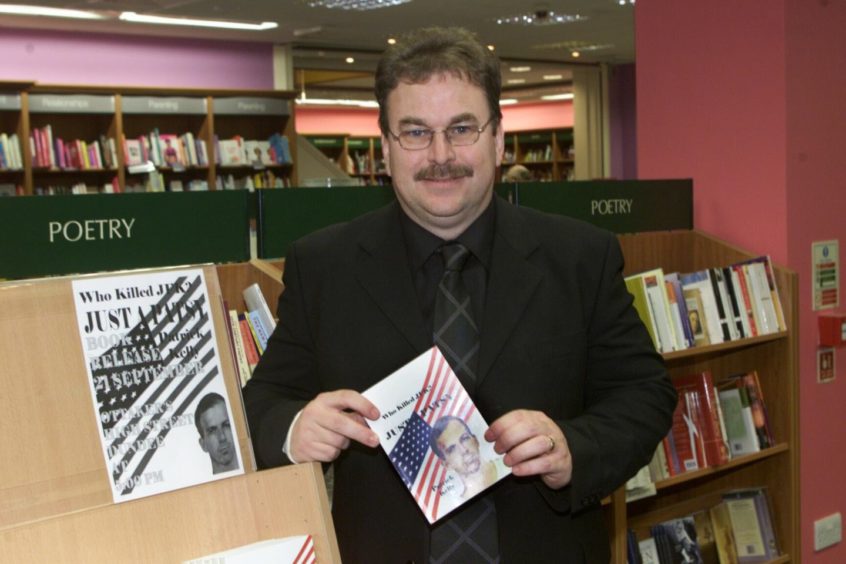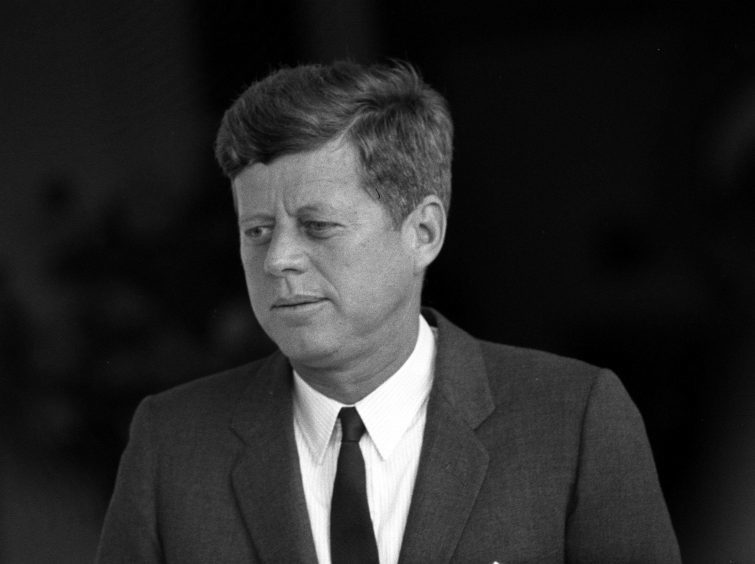The skirl of the Black Watch bagpipes captured the hearts of US President John F Kennedy and his family.
Three months into their 1963 tour of America the pipes and drums of The Black Watch were performing on the south lawn of the White House.
The concert was said to be the last time President Kennedy spent a happy day with his two young children Caroline and John.
President Kennedy was called away and did not join the band after the performance when they drank whisky in the White House.
Flashing smile
However, there was a surprise for them as they left.
As the two buses returning them to barracks were setting off they stopped to allow a man to jump on.
“I wanted to thank you guys for what you did,” he announced.
The flashing smile was unmistakable.
The bus fell silent as they realised they were being addressed by the president.
He said: “Unfortunately, I got called away on State business towards the end, otherwise I’d have loved to have had a drink with you.”
President Kennedy went down the bus, shaking hands, before going to the second bus to repeat his gratitude.
Used to performing for British dignitaries without any such acknowledgement, the band’s esteem for JFK rose immeasurably in those moments.
Nine days later the president was shot dead in Dallas, Texas, on November 22.
The Black Watch band was still in the United States and heard the news at the end of another long day’s drive from their previous venue in Atlanta to Knoxville, Tennessee.
Shock
As the bus pulled up in front of their hotel the driver suddenly turned up the radio so they could hear an announcement that shocked the world.
The president was dead after being fatally shot while riding in an open-car motorcade through the streets of downtown Dallas.
For the second time, President Kennedy had brought silence to the bandsmen’s bus.
Immediately after the assassination, the band performed a small public tribute to JFK.
Pipe Major Jim Anderson played Flowers o’ the Forest and the band followed with the American National Anthem.
The tribute was initiated with a short speech by the commanding officer.
He said the regiment were “offering our empathy to the American people and associating ourselves with them at this time”.
In a bar that night blood was shed as some of the men expressed their sadness at the tragic demise of the man they’d met just days earlier.
Bar fight
But they were unaware that many in America were strongly – and as it turned out, violently – opposed to a Catholic president and their remarks landed three of the band in hospital after a fight broke out with some locals.
The following night’s concert was cancelled as a mark of respect, but on the Sunday the bandsmen fell in for an announcement.
The president had told his wife Jackie how impressed he had been with The Black Watch men and the First Lady personally requested their involvement in her husband’s state funeral.
Only nine pipers were required for the duty and it was left to Mr Anderson to select which of the 24 it would be.
Those chosen were immediately put on a US Air Force plane to Washington for the funeral the following day.
Slow march
Despite it being late when they arrived, the pipers spent two hours practising what they’d play in the cortege while Mr Anderson met with US officers who were arranging the highly-accelerated parade.
It was after midnight when he returned with bad news.
In Britain the pace at funerals is “slow march”.
It turned out to be “trail arms” in America which is a completely different pace and meant all the tunes they’d rehearsed would be at the wrong beat.
The Black Watch were the only non-American service personnel to take part in the funeral procession.
And until then there was no tradition in America of pipers playing at a service funeral.
It was a first which has since been adopted throughout the US.
It was a frosty morning in Washington that day with a wintry wind sweeping the wide avenues.
The party had to wait two hours outside the White House for the procession to arrive, by which time their fingers were fast becoming numb and frozen.
As they waited, the men star-spotted the world’s dignitaries and showbusiness personalities, such as Lana Turner and Peter Lawford.
Suitably slowed
At 11.40am, President Kennedy’s coffin emerged to be placed on the gun carriage, before the various American servicemen and bands led off the procession.
The pipers were to fall in behind the Marine Company at the rear of the military escort and some marched with cuts and bruises from the bar fight.
They played The Brown Haired Maiden, The Badge of Scotland, The 51st Division, The Old Rustic Bridge and The Barren Rocks Of Aden, which were all suitably slowed to suit the Americans’ funereal tempo.
Although they only played in the procession and didn’t go to the graveside, it was still another four hours before the men were stood down.
After a quick meal they were flown back to Kentucky to join their regiment and continue the US tour.
The commanding officer spoke with the British Embassy in Washington on whether to perform that night on a national day of mourning.
But it was decided to go ahead and they performed a second tribute to JFK.
Mrs Kennedy later sent a thank you letter to Major Michael Wingate-Gray on December 16 where she expressed her “deep appreciation” and stated that the pipers’ presence “was a great tribute to the president and contributed a great deal to the ceremony”.
She also thanked The Black Watch for sending two Black Watch toy soldiers to the Kennedy children for John’s birthday, which occurred on the day of the state funeral, and for Caroline’s, which occurred two days afterwards.
“Caroline and John are so excited with their Black Watch soldiers and I am so grateful that they had the opportunity to see the performance of The Black Watch on the White House lawn,” she said.
“I am sure they will always remember this experience even though they are very young.”
Author dismisses claims Lee Harvey Oswald stopped off in Scotland in 1959
A dossier on the killing of President John F Kennedy outlined evidence from a female passenger who claimed she sat next to JFK’s alleged assassin Lee Harvey Oswald on a military flight to Germany, via Prestwick Airport, in October 1959.
Louisea Steenbarger was interviewed in 1978 by Surrell Brady for the House Select Committee, who wrote that she had told her the man said his name was Lee Oswald and she didn’t remember him using a middle name.
He seemed tense and didn’t say much and he gripped the arms of the seat so tightly that his knuckles were white.
She thought he was merely afraid of flying.
He seemed hostile when she tried to talk to him but relaxed after they had a meal.
He seemed to her like he had a lot of pent-up emotion.
He said he had served in Japan and the Philippines and was wearing a Marine Corps uniform.
Hastily arranged
He said he had fallen in love with a Japanese girl and had been imprisoned in either Japan or the Philippines because he wanted to marry her.
He said he was being shipped to Germany by the military which had been so hastily arranged that he had not even been able to see his mother.
Mrs Steenbarger described the man as having light to sand hair, light eyes, with sharpshooter medals on his uniform, a name plate saying ‘Lee Oswald’ and a slight Southern accent.
He said his father was named Robert E Lee Oswald.
He talked about putting down the American system.
He said he was being shipped to Germany because they needed him right away and that he had a skill he could use there, but she didn’t recall if he specified what skill.
The plane landed in Prestwick.
Mrs Steenbarger and her son got off to use the toilet.
Oswald said he was ill.
He stood at a distance and seemed to be watching her suspiciously.
After that, he didn’t speak to her anymore.
When they got back on the plane the man named Oswald sat across the aisle from her and her son.
Never seen again
Their plane landed at either Rhine/Maine or Frankfurt.
That was the last time she saw the man named Oswald.
Dundee author Patrick Kelly, who wrote the book, Who Killed JFK? Just A Patsy, said he does not believe it was the real Oswald.
Mr Kelly said: “In my opinion it was just another one of those strange Oswald sightings and there were many of them especially leading up to the assassination.
“In most cases Oswald was acting or behaving strangely, but we also know that persons unknown were impersonating him and someone was even using his identity while he was in Russia.
“I note that she did not give an exact date of the flight, but I understand that she was recalling the story 19 years later in 1978.
“There is absolutely no evidence or record to back up this story of Lee Harvey Oswald landing at Prestwick Airport.
“What we know is that Oswald docked at La Pallice, France, on October 5 1959 from the SS Marion Lykes.
“The SS Marion Lykes next sailed north to the port of Le Havre, France, where Oswald and a Mr and Mrs Church disembarked.
“Oswald’s passport was stamped on October 8 1959.”
Southampton
Mr Kelly said the following day Oswald secured passage to Southampton where his passport was stamped by a British Immigration officer.
“After spending the night of October 9 1959 at an unknown location, Oswald left London the next day by air to Helsinki, Finland,” said Mr Kelly.
“Lee Harvey Oswald’s passport is stamped showing these locations so whoever it was who landed in Prestwick was most likely an imposter.
“But whatever the truth behind the Prestwick Airport story it could not have been about any conspiracy to kill President Kennedy as he had not even been elected.”
Oswald always denied the murder of President John F Kennedy
Five government investigations concluded that Oswald shot and killed President Kennedy from the sixth floor of the Texas School Book Depository.
The former US Marine killed a policeman who questioned him on the street following the assassination.
Thirty minutes after that, he was arrested in a cinema by police.
Oswald was eventually charged with the murder of President Kennedy.
He denied the allegations.
Two days later, Oswald was fatally shot by local nightclub owner Jack Ruby in the basement of Dallas Police Headquarters.
